Browse Houses
Search Results: Returned 5516 records. Displaying results 3701 – 3800
| House name | Description | |
|---|---|---|
| Marlow | An early 18th century house, the seat of a branch of the Pennefather family, with some early 20th century additions. Still extant, this house was the residence of Thomas Pennefather in 1814 and Edward Pennefather in the mid 19th century. He held the property in fee and the buildings were valued at £14. The Pennefathers were still resident at Marlow in the mid 20th century. |

|
| Marnellsgrove | The home of the Marnell family at the beginning of the 19th century. Richard Marnell was resident in 1814. | |
| Marsh House | Robert Tighe was leasing this property to William Jago at the time of Griffith's Valuation, when it was valued at £14 5s. A house is still extant at the site. | |
| Marshalstown | This house was known as Castle Eugene in 1837 when it was the home of Eugene O'Neill, medical doctor. Dr O'Neill was still resident in the early 1850s when the house was valued at £41.10 shillings and held from the Earl of Kingston. This house no longer exists. | |
| Marshtown House | Held in fee by R.H. Gumbleton at the time of Griffith's Valuation, when it was valued at £8 10s. The property is labelled Marshtown House on the 1st editon Ordnance Map but is not labelled on the later 25-inch edition. Marston House (W950987), in the adjacent townland of Marshtown, is shown on the 25-inch map of the 1890s but there is no trace remaining. | |
| Marshtown/Marston | Home of Richard Henry Gumbleton in the early 19th century and at the time of Griffith's Valuation when the buildings were valued at £12. 10 shillings. Advertised for sale in June 1854. Hajba writes that the Orpens built a much large house on the demesne in the 1860s which was burnt some time later. In 1906 Basil Orpin occupied a house valued at £55 at Marshtown. Buildings still exist at this site. An earlier Marshtown House, previous home of the Gumbletons, was located over the border in county Waterford. | |
| Martinstown | Martinstown was the residence of M. Walsh in 1837. At the time of Griffith's Valuation this was a house on the Trench/Gascoigne estate valued at £10+ and inhabited by William O'Grady. Bence Jones refers to a modern house built in circa 1972 at Martinstown, Kilmallock. | |
| Martinstown | In 1786 Wilson refers to Martin's-town as the seat of Mr. Davys. The residence of George Davis in 1814 and of Mr Davis in the 1830s, apparently held from the Digby family. By the time of Griffith's Valuation Ballymartinmore was in the possession of George Digby and a vacant house valued at £4 was held by Edward Flynn. The house is no longer extant. |

|
| Mary Ville | Mary Ville is marked on the first Ordnance Survey map. In the early 1850s the house was occupied by John Hurley who held it from Colonel George Teulon. It was valued at £10. A house is still extant at the site. | |
| Mary Ville | This house is marked as Mary Ville on the first edition Ordnance Survey map. In 1840 the Ordnance Survey Name Books refer to it as "a respectable farmhouse and offices" the proprietor of which was Michael Head. This may be the house recorded by Lewis as Derry Ville inhabited by J. Salmon. At the time of Griffith's Valuation Mrs Mary Sparling was resident, holding the lodge valued at £13 from Francis Spaight. Buildings are still extant at this site. | |
| Mary Ville (Kinneigh) | Leased by Joseph Hosford from the Devonshire estate at the time of Griffith's Valuation, when it was valued at £11 10s. | |
| Maryborough | The sale rental for the Mannix estate states that this house was built in 1816 at a cost of £3,000. Occupied by J. Wallis in 1837 and by Henry Mannix in the early 1850s. Mannix held the property from the representatives of the Reverend Robert Dring and the buildings were valued at £28. |

|
| Maryborough | Miss Jane Clerke was leasing this property from Thomas Beggs [Biggs] at the time of Griffith's Valuation, when it was valued at £14. It is likely that this is the same as Thomas Biggs of Dunmanway. In 1837, Lewis had noted the house as the seat of Maj. Broderick. The house appears to have been replaced by a modern building but the remains of the large walled garden are still extant, enclosing large modern farm sheds. | |
| Maryborough | In 1786 Wilson refers to Maryborough as the seat of Mr Newnhan and it was also a Newenham home in the 19th century, occupied by R. Newingham in 1814, by Edward Eyre Newenham in 1837 and at the time of Griffith's Valuation. He held the property in fee and the buildings were valued at £80. Thomas Sherrard held a mansion house valued at £61 in this townland in 1906. It is now part of a large hotel complex. |
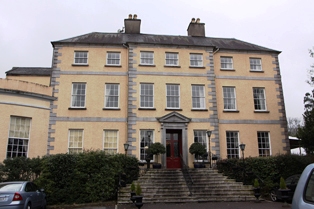
|
| Marybrook | This was originally a tower house with additions from the mid 18th century. Occupied by Edward H. Reardon in the first half of the 19th century and by John O'Connell in the mid 19th century, when it was valued at £11 and held from Bartholomew Gibbings. In the sale rental of May 1860 this house was describes as in "thorough repair" and leased to John Connell for 100 years from 1851. In the 1940s the Irish Tourist Association Survey reported that it was then the residence of the Cronin family. It is still extant and in use. |
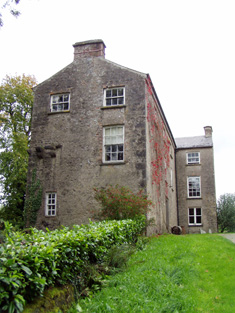
|
| Maryfort | An early 18th century house with late 19th century embellishments, home of the Westropps. By the early 19th century it was occupied by John O'Callaghan (died 1818) who seems to have moved there from Kilgory. Occupied by his grandson John O'Callaghan at the time of Griffith's Valuation, valued at £35 and held from George Westropp. In the 20th century it was the home of his son Colonel George O'Callaghan who assumed the additional name of Westropp. Weir writes that the house was demolished in 1967 by Colonel Conor J. O'Callaghan Westropp, the last member of the family to live there. |
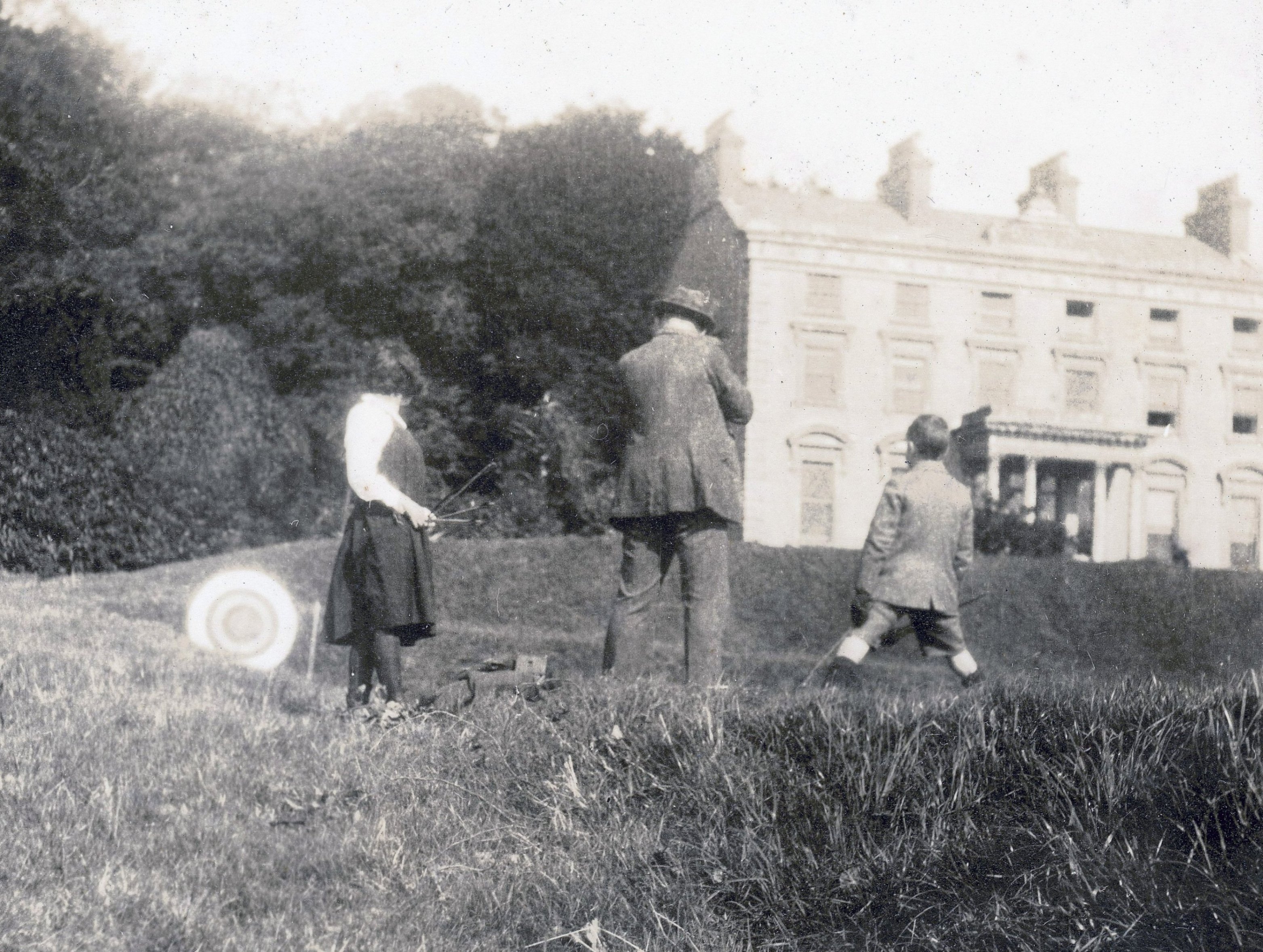
|
| Maryland House | The residence of Joseph Haynes in 1837 and the early 1850s, held by him from William Player at the time of Griffith's Valuation and valued at £20. A cornmill was located closeby. Maryland is no longer extant. | |
| Maryville | The home of Laurence Corban in 1837 when Lewis records it as “ a handsome mansion of recent erection and finely situated on the Funcheon [River]”. Laurence Corban held Maryville House and the mills in perpetuity at the time of Griffith's Valuation. The house was valued at £32 and the mills complex at £160. The Lucas family succeeded to this property and Hajba writes that it became the dower house for nearby Ballynacarriga. The Irish Tourist Association surveyor in the 1940s reported that it was then occupied by Mr. Glass, an agricultural instructor. In 1965 the house was sold by the Corban Lucas family. It remains a family residence. | |
| Maryville | Built in 1790 and located on the Monsell estate the residence of Hugh F. Finch in 1837 and of Mrs Finch at the time of Griffith's Valuation when the buildings were valued at £28. In 1906 Captain G.W. Finch occupied the mansion house at Maryville valued at £35. Still in the ownership of the Finch family at the time of the Irish Tourist Association survey 1943. This property is now known as Maryville stud. |

|
| Maryville House | At the time of Griffith's Valuation, Arthur Alexander occupied Maryville House at Cahermore, barony of Kiltartan, when it was valued at £8. Maryville Police Barracks was located nearby. The original Maryville House has disappeared and the house on the site of the barracks is known as Maryville House. |
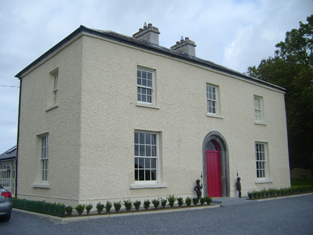
|
| Mason Lodge (Raphoe) | William McCormack was leasing this property from John S. Law at the time of Griffiths Valuation in the 1850s, when it was valued at £10. McCormack was one of the investors associated with the Lough Swilly land reclamation works in the mid 1840s. This property is now the centre of a large farm. | |
| Masonbrook | Masonbrook was originally the seat of the Mason family but was later bought by the Smyth estate. At the time of Griffith's Valuation it was occupied by James Smyth and was valued at £60. It is recorded in the Valuation and the 1906 report on Untenanted Demesnes as located in the townland of Moanmore East but is shown in the townland of Masonbrook on the 1st edition OS Map of 1842. In 1906 it was valued at £60. It is not shown on the 25-inch edition Ordnance Survey map and is no longer extant. |

|
| Massbrook | The Irish Tourist Association file makes it clear that there were two houses at Massbrook, both in good condition in the 1940s. One was of French design erected in the 1890s by Colonel Johnston, the then owner of the estate. There was also an older and smaller house, see under Woodpark. D.15166 in the National Archives refers to the house and demesne of Massbrook in 1868. Described by Bence Jones as a late Victorian house, the seat of the Walsh family. In the early 1990s Mrs Mary Robinson, former President of Ireland, purchased the house known as Massbrook, formerly owned by Denis Ferranti. | |
| Massy Lodge | This house is named Massy House on the first Ordnance Survey map and was the main residence of Lord Massy in the first decade of the 19th century. In 1814 Anglesborough was occupied by Hugh Toutstone [Touchstone]. Lewis describes Massy Lodge as the elegant residence of Lord Massy. At the time of the first Ordnance Survey Massy Lodge was the residence of Robert Harding. It was held by Lord Massy in fee at the time of Griffith's Valuation and valued at £24+. The partly demolished house is now owned by the Hanly family. |

|
| Mawbeg House | Leased by Robert Popham from the Devonshire estate at the time of Griffith's Valuation, when it was valued at £10. A house still exists at the site. |

|
| Mawmore House | William Scott was leasing Mawmore from the Devonshire estate in 1851 when it had a valuation of £24. Lewis refers to is as the seat of S.B. Beamish in 1837. A house still exists at the site. |

|
| Maxfort House | Maxfort was the home of John Max in 1814 and of William Max in 1837 and at the time of Griffith's Valuation. It was held from Viscount Hawarden and valued at £15.18 shillings. A house is still extant at the site. | |
| May Park | George Meara was leasing this property from the Power estate at the time of Griffith's Valuation, when it was valued at £78. Lewis also notes it as his seat in 1837. | |
| Mayfield | In the 1770s and 1780s, Poole Esq was resident at Knocknaville near Bandon. Thomas Poole held Mayfield in perpetuity at the time of Griffith's Valuation, when it was valued at £48. Both Lewis, in 1837, and Leet, in 1814, also refer to it as his residence. Mayfield was burnt in June 1921 during the War of Independence when it was the residence of Hewitt R. Poole. It is now a ruin. |

|
| Mayfield (Kinsalebeg) | In 1851 Thomas P. Carew was leasing this property from the Smyth estate when it was valued at over £20. A house labelled Mayfield appears at this location on the 1st edition Ordnance Survey map. In 1837 Lewis noted it as the seat of J. Gee. It is still extant and occupied. |
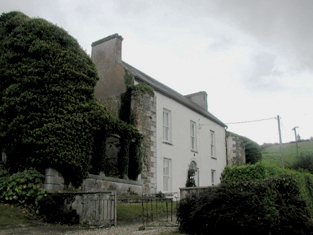
|
| Mayfield (Lismore) | The sale notice concerning the property of Robert Dring O'Grady in the barony of Coshmore and Coshbride, county Waterford, includes details of the house built on the property by Captain O'Grady in the 1850s. It was "of modern construction" and had cost over £1200. |
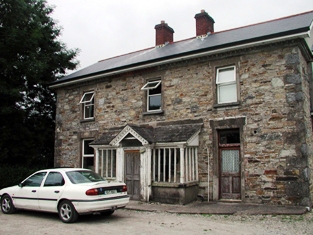
|
| Mayfield (Portlaw) | Mayfield was held by William Malcolmson from the Medlicott estate at the time of Griffith's Valuation, when it was valued at £50. Lewis refers to it as the seat of J. Malcolmson in 1837. In 1906 it was the property of William Malcomson and valued at £31. It is now a ruin. |
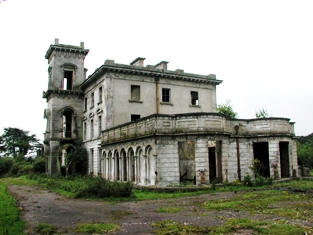
|
| Mayfield House | A Price home, occupied by Thomas Price in the mid 19th century and held from William Price, it was valued at £14+. Still extant and occupied. |

|
| Mayfield or Rocket's Castle | The property at Rocketscastle was held in fee by Rev. John T. Medlicott at the time of Griffith's Valuation, when it was valued at £36. In 1906 he was still the owner of the property then valued at £30 10s. Morris states that this property was originally part of the May estate and known as Mayfield . Smith, writing in 1774, refers to Mayfield as "the pleasant seat of Sir James May, formerly called Rockett's Castle" and Wilson also mentions it as his residence in 1786. The original Rockett's Castle was in ruins by the time of the 1st Ordnance Survey and this house was built after that on an adjacent site. The 1943 ITA survey, indicates that the Medlicotts had adapted the old castle building as an engine house at that time. A house is still extant at the site. | |
| Mayne House | In 1837 Brian Sheehy was resident at Mayne and in the early 1850s Bernard Sheehy held the house valued at £21+ from John Duggan and all the townland of 107 acres. It is no longer extant. | |
| Meadstown | Burke's ''Landed Gentry of Ireland'' (1904) records the Franks family of Maidstown, county Cork. Hajba dates the present house circa 1860 replacing an earlier house. At the time of Griffith's Valuation the Reverend James Golden occupied Meadstown which he held from Henry Franks. The buildings were valued at £10.15 shillings. This house is still occupied. | |
| Meanus House | Sir David Roche was leasing the property at Meanus to Michael Neligan at the time of Griffith's Valuation, when it was valued at £9 10s. In the 1830s, the Ordnance Survey Field Name Books describe it as "a large house, two stories high with offices attached at present occupied by a farmer". In 1786 Wilson had noted Menus as the seat of Dr. Drew. Bary states that it has been in the Neligan family for many generations and is still extant. | |
| Meanus House (Kiltallagh) | Lady Anne Headley's estate was leasing this property to Charlotte Walker at the time of Griffith's Valuation, when it was valued at £9 15s. Bary writes that it was leased by the Winn estate in the early part of the nineteenth century to the Walkers and later to the Spring family. It is still extant and was renovated in the twentieth century. |
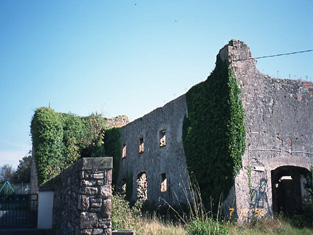
|
| Meelick | Weir states that Meelick was a Burke house in the seventeenth century when Burkes, originally from Clondegoff Castle, in the barony of Longford, settled here. At the time of Griffith's Valuation Walter Blake was occupying the house at Meelick, parish of Clonrush, barony of Leitrim, valued at £17. In 1814 this property was the residence of Matthew Yelverton. The OS Name Books record Meelick as the home of Mr. Gilbertson. Lewis recorded it as "uninhabited" in 1837. There is still an occupied house at Meelick. The Irish Tourist Association file for the parish of Clonrush refers to Meelick as a substantial house with a concrete roof, ancestral home of the Burkes. |

|
| Meelick House | A house built by the time of the first Ordnance Survey on the Marquess of Conyngham's estate and occupied by William Roche at the time of Griffith's Valuation, when it was valued at £11. This house is no longer extant. | |
| Meenglass | Meenglass was constructed after the publication of the 1st Ordnance Survey. At the time of Griffiths Valuation it was held in fee by Viscount Lifford's estate and valued at £40. In 1906 it was still held by Viscount Lifford's estate and valued at £40. The National Inventory of Architectural Heritage suggests it was demolished around 1930. | |
| Meenvane | John Limerick was leasing a property to Nathaniel Lannon (?) at the time of Griffith's Valuation, when it was vaued at £13. This property appears to have been situated on the main street in the village of Skull. | |
| Meeshal House | In 1837 Lewis describes the work done at Myshell by Dr Barter “whose demesne of 200 acres, formerly an unprofitable waste, has, since 1826, been reclaimed and brought into a state of high cultivation.” The house valued at £36 was occupied by Thomas Kenyon at the time of Griffith's Valuation and held from Henry Lindsey. In the 1940s the Irish Tourist Association survey noted that it was "formerly a Hydro before the enterprise transferred to St. Ann’s in Blarney". The National Inventory of Architectural Heritage suggests that the current house incorporates portions of the original. |

|
| Meldrum | The Sall family were located at Meldrum in the early 17th century and through marriage the property passed to the Latham family who were resident in the 1780s. . A mainly 18th century house built onto part of a 17th century house Meldrum was a Lloyd residence in the 19th century. It was the home of Richard Lloyd in 1814 and of the Reverend Richard Lloyd in 1837 and at the time of Griffith's Valuation, when it was valued at £26+ and held from Oliver Latham. The Lethams were resident in the 1770s. In 1894 Slater notes it as the seat of David Tennant. A house and large farm now occupy the site. |
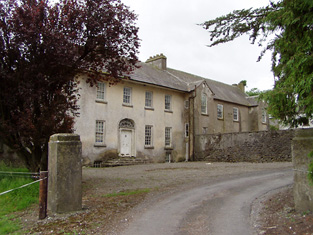
|
| Mellefontstown | The main residence of the Nason family in the 18th century, John Nason was resident in 1814 and Pierce Cotter in the early 1850s. Cotter held the property from Thomas Wise and the buildings were valued at £19+. In May 1863 Pierce Joseph Cotter's estate at Mellifontstown, containing the house, demesne and 246 acres was advertised for sale. It was held on a lease dated 1852 from Francis Wise to Pierce Cotter for 185 years. A new house now stands on the site. | |
| Mellon | The Westropp family are recorded as "of Mellon" from the early 18th century. Bence Jones dates the present house from circa 1780, the Ordnance Survey Field Name Books from 1812. Inhabited by Mrs Jane Westropp (nee Dawson) in the early 1850s. It was valued at £36. This 3 storied house was still in Westropp possession in the late 20th century. It is now run as a stud. |
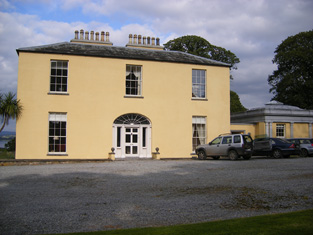
|
| Melview | A house on the outskirts of Clonmel, occupied by Robert Malcomson in the mid 19th century, held from John Bagwell and valued at £52. This building now functions as a nursing home. |

|
| Menlo/Menlough Castle | A 17th century tower house with substantial additions. In 1786 Wilson refers to it as the seat of Sir Thomas Blake. Menlo Castle was occupied by Thomas Blake at the time of Griffith's Valuation when it was valued at £30. It continued to be the home of the Blake family until the house was burnt by an accidental fire in 1910 and has been a ruin ever since. |

|
| Merlin | In 1850 Abraham Grubb held this property in fee when it was valued at £54. Merlin is still extant and occupied. |

|
| Merlin Park | A house on the outskirts of Galway, built by Charles Blake in the first decade of the 19th century. Bought by Henry Hodgson in the Encumbered Estates' Court in 1852. It was held in fee by him at the time of Griffith's Valuation and valued at £65. Merlin Park was purchased by the Waithman family in 1876 and in their ownership until 1945. Thereafter it was compulsorily acquired for the building of a TB sanitorium. The house no longer exists and Merlin Park Hospital now occupies the site. |

|
| Mertonhall | Merton, Cloghjordan, was the home of T.G. Fitzgibbon in 1814. It was purchased by Robert Hall in 1828 and he was the proprietor in 1837. The Ordnance Survey Name Books noted in 1841 that it was formerly known as "Litty Ville House". The house was valued at £55 at the time of Griffith's Valuation and held by Robert Hall in fee. The Hall family continued to use Merton as a residence in the 1870s. By 1906 the representatives of De Courcy P. Ireland were occupying Mertonhall. He was married to Ada Hall. This house is now demolished. | |
| Merville House | Occupied by John Carroll in 1837 and held by him in fee at the time of Griffith' s Valuation. Weir writes that the house was in ruins by 1904. |

|
| Mervue/Merview | Built circa 1777 by the Joyces. In 1786 Wilson refers to a house near Galway as the seat of Dr. "Joice". The house was sold by them to Royal Tara China in 1953. This company occupied the building for over 50 years, closing down at the end of 2003, though the shop premises still operates from this building. A fire badly damaged the original building in 1957. |

|
| Middlequarter | Occupied by Henry P. Hildebrand at the time of Griffith's Valuation, who was Wilberforce's agent. The property was then valued at £10. | |
| Midfield House | Occupied by Anthony Kelly in 1814 and by P. Kelly in 1837. There is no house with a significant valuation in this townland at the time of Griffith's Valuation. Farm buildings appear to occupy the site now. | |
| Mighnawn Cottage | Labelled as Mighnawn Cottage on the 25-inch Ordnance Survey Map of the 1890s, this property was leased by Miss Mary Owens from the Power estate at the time of Griffith's Valuation. It was valued at £20 8s. | |
| Milane House | Leased from Rev. John D. Beecher by Thomas Gilman at the time of Griffith's Valuation, when it was valued at £11 15s. A house still exists at this site. | |
| Milcum House | Ruane states that this house was built in 1754 by the Browne family [of Westport] and that it was first known as 'Seamount'. There was another Milcum house, built in the small townland of Milcum by the Binghams in the early 18th century, which was the house marked 'in ruins' on the first Ordnance Survey map. Seamount was occupied by Connell O'Donel in 1837. At the time of Griffith's Valuation it was unoccupied but in the possession of Nathaniel P. Simes. In the 20th century it was the home of Miss Laprimandaye, Sir Anthony Beever, the Brittains, the Percivals and Mr and Mrs Peter Mullowney. Milcum is still extant and occupied. |
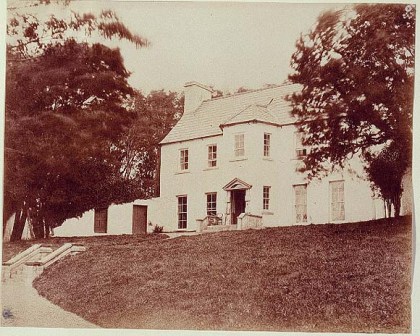
|
| Milford | Early 18th century house with some 20th century alterations. |
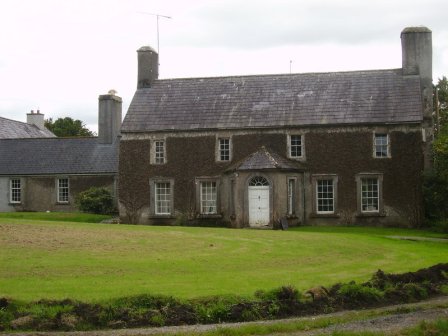
|
| Milford | Lewis records Milford as the occasional residence of Ralph Smith. By the early 1850s it was occupied by Thomas Bunbury and held from William Woods. Bence Jones writes that it was the home of Edmond Murphy who died in 1882. In 1840, he Ordnance Survey Name Books refer to the house as the residence of John Monsell and describe the demesne as "principally composed of plantation and ornamental grounds". |

|
| Milford | A Morony residence located on the Fitzgerald of Carrigoran estate. Occupied by James Fitzgerald in 1814 and by Edward Morony at the time of Griffith's Valuation. It is labelled Millford House on the 1st and subsequent edition Ordnance Survey maps. A house is still extant at the site. | |
| Milford | Built by George Maunsell, fourth son of Richard Maunsell of Ballywilliam, in the late 18th century. Occupied by the Reverend M. Widenham in the late 1770s, and 1786, by Lord Kiltarton [John Prendergast Smyth became Viscount Gort in 1816] in 1814, by T. Fitzgerald in 1837, by Captain Stackpool circa 1840 and by Henry Allen in the early 1850s, this house was situated on the Maunsell estate. It was valued at £28 at the time of Griffith's Valuation. Referred to as the "splendid residence" of the Dowager Lady Massy in the sale rental of 1868. Tracy writes that the 5th Baron Massy bought it for his mother in 1850 from the Maunsells. Later sold to the Russell family and bought by the religious order, the Little Company of Mary, in 1923. Now part of a nursing home for the terminally ill. |

|
| Milford House | In 1850, Mrs. Anne O'Brien was leasing this property from the Medlicott estate when it was valued at £10 15s. Morris refers to a Rogers family "of Coolroe" in the mid eighteenth century. This house is no longer extant. | |
| Milford/Millview | Lewis refers to "Millview" as the seat of Kerry Supple in 1837. A house named Millford is shown in the parish of Rattoo on the 1st edition Ordnance Survey map, adjacent to a building labelled Millford Tuck Mill. The house is present on the 25-inch map of the 1890s but the mill is not labelled. At the time of Griffith's Valuation, Justice Rice held this property from the Provost and Fellows of Trinity College when it was valued at £2 15s. Bary writes that it burned down in the 1970s and is now a ruin. | |
| Milfort/Milford House (Portlaw) | Milfort House was another property held by the Malcomson family in Portlaw. It was part of a complex designed by the well-known architect John Skipton Mullvaney. Milfort was demolished in the mid-twentieth century but some estate architecture survives. |
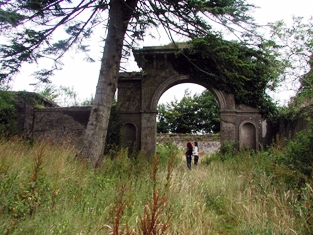
|
| Mill Cove (Bear) | Leased by Patrick O'Sullivan from the Earl of Bantry's estate in 1852 when it was valued at £14. Local sources suggest O'Sullivan worked as an agent for the White estate. The house has been demolished though traces of the stone work can still be seen in the gardens which are now part of an art gallery and sculpture display. | |
| Mill Grove House | In 1841, the Ordnance Survey Name Books describe Mill Grove House as " a good house with demesne and plantations, the residence of Mr. Kennedy". At the time of Griffith's Valuation, Edward Kennedy was leasing a substantial milling complex and a house at this location from the Stoney estate. The buildings had a value of £46+. It is labelled Millgrove House on the 25-inch map of the 1890s but is no longer extant. | |
| Mill House (Ballinascarty) | William G. Harris was leasing this property to Charles Connell at the time of Griffith's Valuation, when it was valued at £7 15s and the adjacent mill valued at £41. It is labelled Mill House on the 25-inch Ordnance Survey map of the 1890s, though the corn mills are labelled disused at that time. A house is still extant at the site though the mills are now ruinous. | |
| Mill Mount House/Carrickaderry | The house in the village of Clontibret on this site is recorded on the 1st edition 6 inch Ordnance Survey map (1836) as Mill Mount House. It was located on the Blayney (Hope) estate and was the home of the Swanzy family. Lewis refers to the ‘handsome residence’ of A. Swanzy while the Ordnance Survey Field Name Book describes it as a two storey slated house. There was a corn mill nearby. The house was extended and was valued at £24 in the mid-19th century when Humphry Jones, son-in-law of Andrew Swanzy, was the occupant. On the 25 inch map it is named Carrickaderry House. McSkane writes that Carrickaderry was built for the Coote family from Cootehill, Co Roscommon and inherited by a cousin Humphrey Jones. The old house was demolished and a new one built which passed to the McQuade/McQuaid family following the death of Humphrey and his wife. House demolished in the early 1970s. | |
| Mill View | A five bay three storey house built about 1800, with some modern additions. At the time of Griffith's Valuation held by Sir Edward Tierney in fee, the buildings were valued at £19+. |

|
| Mill View | This house was the home of the Sargent family in the 19th century, inhabited by Henry Sargent in 1814 and at the time of Griffith's Valuation. It was held from the Earl of Glengall and valued at £30 in the early 1850s. This house is no longer extant. | |
| Mill-Land | William Meade was leasing this property to Thomas R. Leane at the time of Griffith's Valuation, when it was valued at almost £9. | |
| Millbank House | At the time of Griffith's Valuation, the Allingham family were leasing this house, valued at £8, from the Lane Fox estate. It is still extant and occupied. |

|
| Millbrook | A 19th century house occupied by the families that ran the mill. At the time of Griffith's Valuation the occupier was Peter Macmillan who held the property from Thomas Arthur. The buildings were valued at £40. A house is still extant in the area but on an adjacent site. | |
| Millbrook | Millbrook House was held in fee by John Bermingham at the time of Griffith's Valuation when the house was valued at £11 and the nearby mill (M412635) at £12. Both buildings are now in ruins. |
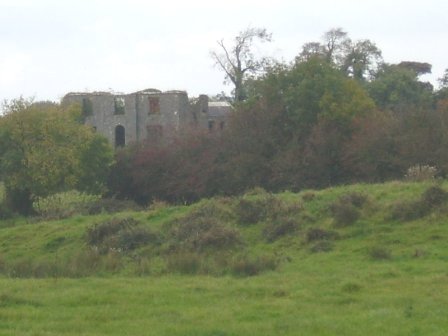
|
| Millbrook | Described by Wilson as the seat of Mr. Hawkshaw in 1786, Millbrok was also the home of the Hawkeshaw family in the 19th century, occupied by Richard Hawkshaw in 1814 and of his representatives in the early 1850s, when it was held from George Armstrong and valued at £19+. Millbrook House was included in the sale of the Earl of Listowel's estate in 1861. Michael Dwyer was the tenant. A building is still located at this site. | |
| Millbrook House | There is a lithograph of this house attached to the sales rental of Lord Oranmore and Browne's estate in 1854. The sale rental states that the late tenant [Lawrence Glynn] recently expended a large sum in building a residence on this lot. This later building is labelled Millbrook House on the 25-inch Ordnance Survey map of the 1890s. It is no longer extant. | |
| Millbrook House (Castleisland) | The Ordnance Survey Name Books record Millbrook House, in Knockrower East townland, as the residence of William Fitzgerald, on perpetual lease from the O'Connells of Grenagh. | |
| Millbrook House(Drumcliff) | Edward Simpson was leasing a house, mill and associated buildings at Ballincar, barony of Carbury valued at £16 from the Wynne estate at the time of Griffith's Valuation. He offered the property for sale in the Landed Estate's Court in April 1873. The sale notice indicates that he held it on a Fee Farm Grant from Owen Wynne dated 1868. The original house is no longer extant. | |
| Milleen | Rev.William Jennings was leasing this property from the Hungerford estate at the time of Griffith's Valuation, when it was valued at £19 15s. In 1944 the Irish Tourist Association Survey lists Milleen among the houses in the area which had been burnt during the War of Independence and were then derelict. It is no longer extant. | |
| Millfield House (Inishowen) | Millfield House and adjacent mill buildings was leased from Sarah McClintock by George H. Mitchell at the time of Griffiths Valuation, when it was valued at over £17. It is still extant. The National Inventory of Architectural Heritage includes a detailed account of the now-derelict mill complex and notes its association with the Swan family in the latter decades of the 19th century. |
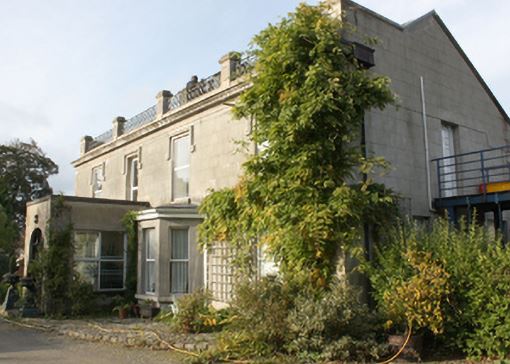
|
| Millfield House (Ross) | This house, with a mill valued at £40, was leased by William Limerick to Henry Morrow in 1851, when the house was valued at £12 5s. Lewis notes Millfield as the seat of Lieut. Lloyd, RN, in 1837 while it is noted by Leet as the residence of Roger Sweeny in 1814. The mill is labelled Ross Mill on the 25-inch map of the 1890s. There is still an extant house at the site as well as the remains of some mill buildings. | |
| Millford | Allen Pollok held a steward's house and offices valued at £16 at Millford at the time of Griffith's Valuation. Extensive buildings remain at the site. | |
| Millfort | This house was the home of the Foote family in the 18th century as Wilson refers to it as the seat of Mr. Foote in 1786. At the time of Griffith's Valuation the house was valued at £4.10 shillings, occupied by William Upplington and held from the representatives of George Foot. It appears to have fallen into ruin by the time the 25-inch Ordnance map was published in the 1890s and no trace remains now. | |
| Millgrove House | Thomas Jackson occupied this house in 1814 and William Walpole in the 1850s. Walpole held the property from Lord Waterpark and the house, office and corn mill were valued at £38. This house has recently been renovated. |
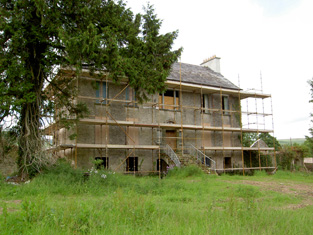
|
| Millmount | Occupied by the Reverend Joseph Gabbett and held from Daniel Gabbett at the time of Griffith's Valuation, when the buildings were valued at £16. It is labelled Millmount on the First Edition Ordnance Survey Map and as Ardvullen on the later 25-inch edition of the 1890s. A house is still extant at the site. | |
| Millmount | Viscount Lorton was leasing a house valued at £18 at Macmoyne, parish of Boyle, to Nicholas Mulhall, at the time of Griffith's Valuation. This may be the still extant Millmount House, associated with the milling complex. |

|
| Millmount House | Thomas Phayre was leasing this property from the Earl of Clancarty's estate at the time of Griffith's Valuation. It also included a mill, herd's house and 150 acres. The National Inventory of Architectural Heritage suggests it was built in the 1760s. It is still extant and occupied. |
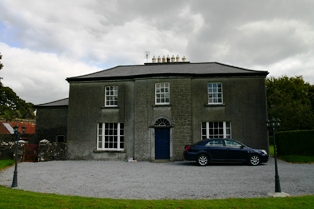
|
| Millpark House | At the time of Griffith's Valuation, Adam Acres is recorded as the occupier of Millpark House, which he was leasing from the Vaughan estate. The house was valued at £18. It is still extant. | |
| Millpark Mill Cottage | In 1840 the Ordnance Survey Name Books refer to Millpark House as the residence of Mr. Lyster. At the time of Griffith's Valuation Hamilton Lyster was leasing a property in the townland of Millpark from Robert Acres. It included a house and mill and was valued at £53. Some ruins of the mils still remain. A building is still extant on the site of Millpark Cottage. | |
| Milltown | Roderick O'Conor/O'Connor occupied the property at Milltown, barony of Castlerea, valued at £36, at the time of Griffith's Valuation. It was also recorded as his seat in both 1814 and 1837. Gormley states that nothing of the house now remains save for traces of the mile long avenue. | |
| Milltown | In the 18th century Miltown was the residence of a branch of the De Lacy family. Mill-town, Bruff, was the residence of Mrs Bevan in 1814. George Gubbins was the occupier in 1837 and at the time of Griffith's Valuation. He held the property valued at £40+ from Edward B. Hartopp. In 1831 George Gubbins married Elizabeth Blood nee Hartopp. This house is named Milltown George on the first Ordnance Survey map. |

|
| Milltown | The Reverend Champagne was resident at Milltown from at least 1837. He is recorded as the occupier of this house in the early 1850s when he held the house valued at £28 from the Reverend Tyrell Evans. | |
| Milltown Castle | Originally the home of Thomas Evans, a younger brother of the 1st Baron Carbery, and of his son Eyre Evans. Mary, sister of Eyre Evans, married George Bruce in the mid 18th century. The Castle was subsequently leased by the Evans to the Bruces and it remained the home of the Bruces until the late 19th century. Described by Lewis as “a handsome castellated mansion in the later English style”. Reduced in size in the early 20th century. The Irish Tourist Association Survey of the 1940s noted that the buildings, at that time the residence of the Keane family, were not in good repair. However, the building continues to be occupied. |
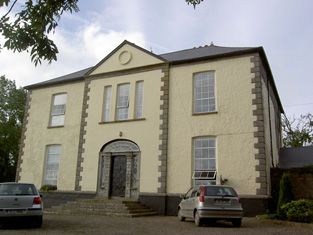
|
| Milltown House | At the time of Griffiths Valuation, Thomas Witheroe was leasing this property from the Marquis of Donegall’s estate when it was valued at £25 and had an adjacent mill. It appears not to be extant now. | |
| Milltown House | In the mid 19th century Henry Briscoe was occupying a house valued at £10.19 shillings and held from Captain Richard Long. This house is still extant. | |
| Milltown House | At the time of Griffith’s Valuation, Robert Hickson was leasing a house & mill, valued at almost £29, from the representatives of Walter Hussey. A large house, now functioning as a guesthouse, is located at the site. |
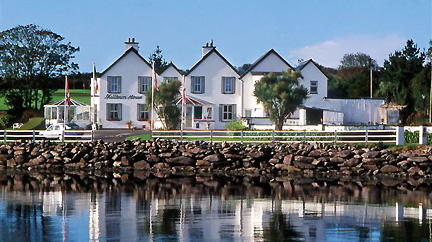
|
| Milltown House (Killymard) | William Graham was leasing this property from the Murray Stewart estate at the time of Griffiths Valuation in the 1850s when it was valued at £30. The house was built after the publication of the 1st edition Ordnance Survey map when the site was occupied by a spade foundry. Buildings are still extant at the site. | |
| Milltown Place | Arthur Aylmer was leasing this property from Lady Carbery at the time of Griffith's Valuation, when it was valued at £17 5s. Aylmer was a younger son of the Aylmer, Donadea, county Kildare, family. His mother was Jane Evans-Freke, a daugher of the 1st Lord Carbery. He was later to succeed to the title of Baron Aylmer. By the 1890s the building at the site has been divided into a school and the Constabulary barracks. A smaller building exists at the site now. | |
| Millview | In 1840 the Ordnance Survey Name Books describe Mill view as "a good dwelling house, the residence of Mr. Short" though noting S. Pepper as the proprietor. At the time of Griffith's Valuation it was leased by Richard Brandley from Mary O'Leary when it was valued at £11. A house is still extant at the site. |

